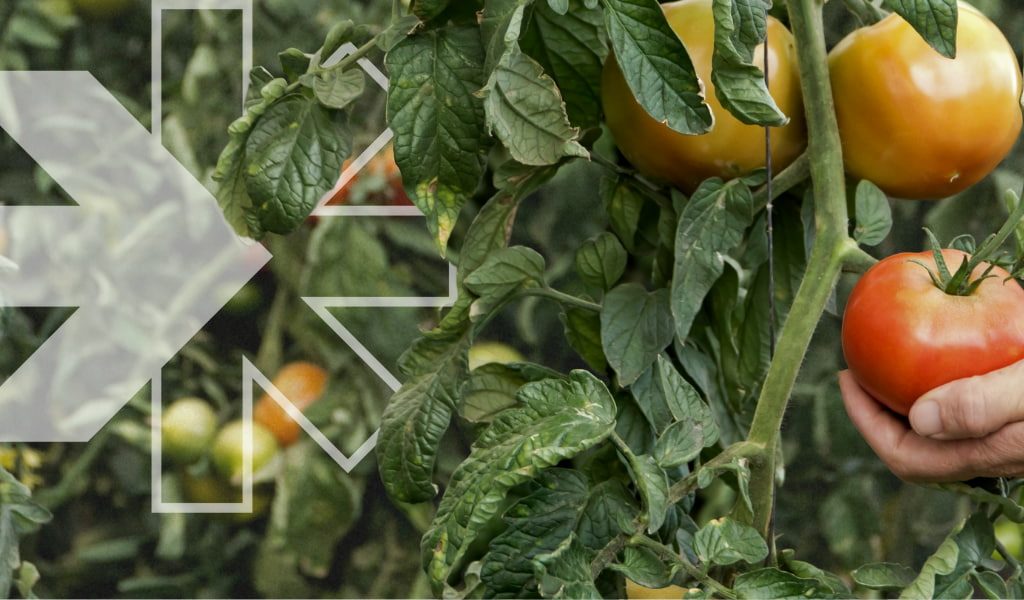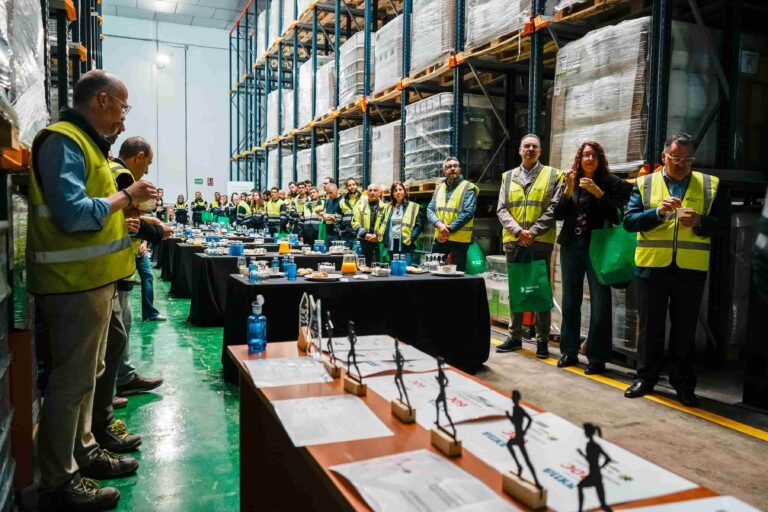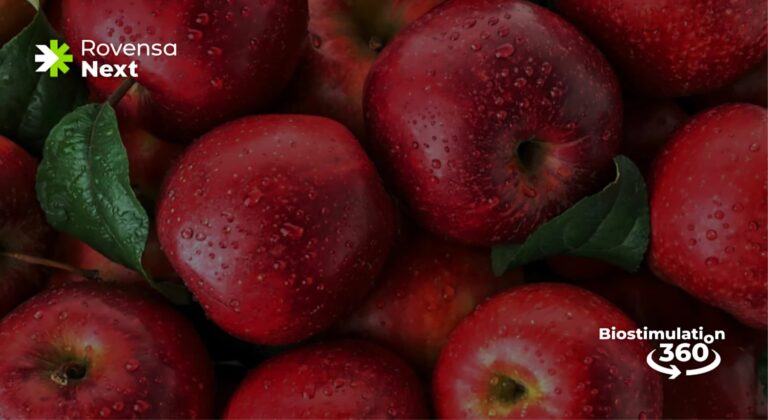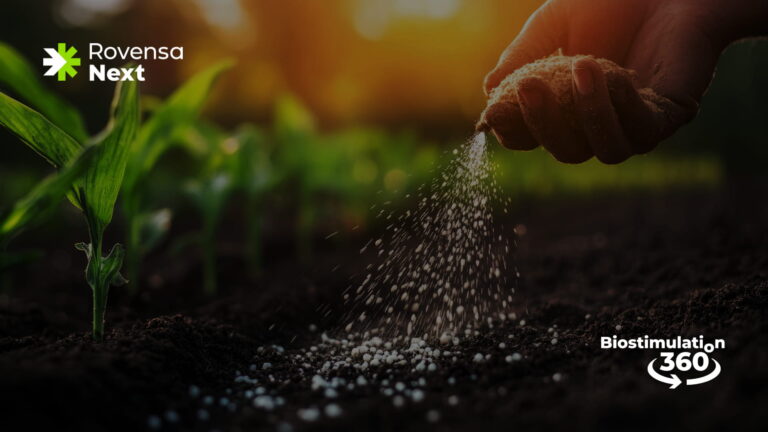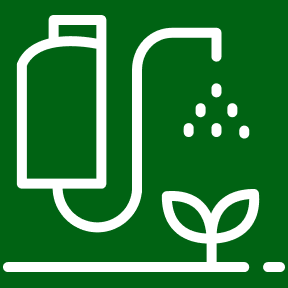This stress significantly compromises global agriculture by disrupting plant growth and development. Prolonged periods of high temperatures intensify water demands, diminish photosynthetic rates, cause protein denaturation, and induce oxidative damage, particularly affecting crop yield and quality during crucial reproductive stages. Mitigating heat stress is crucial for maintaining sustainable food production amid escalating global temperatures, underscoring its critical importance in the agricultural and biostimulant sectors.
Global temperature and population trends
Recent data from the United States National Oceanic and Atmospheric Administration (NOAA) showed that, globally, the five warmest years have occurred since 2015, and nine of the ten warmest years have occurred since 2005. Heat stress losses are responsible for between 18% to 43% of the annual change in yield, and this effect is expected to increase in the coming years.i
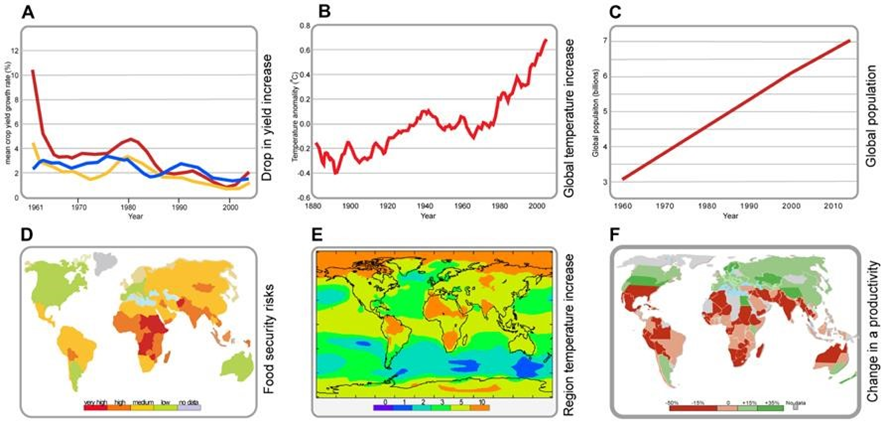
Plant response to heat stress
Morphological symptoms and adaptation
Heat stress causes a variety of detrimental effects on plants, including:
- Reduced vigour
- Sunburn on leaves
- Leaf and branch scorching
- Flower abortion
- Fruit damage and discoloration
- Elongated petioles and hypocotyls
- Decreased seed size, mass, and number in crops such as beans, maize, pears, mangoes, grapes, and apples.
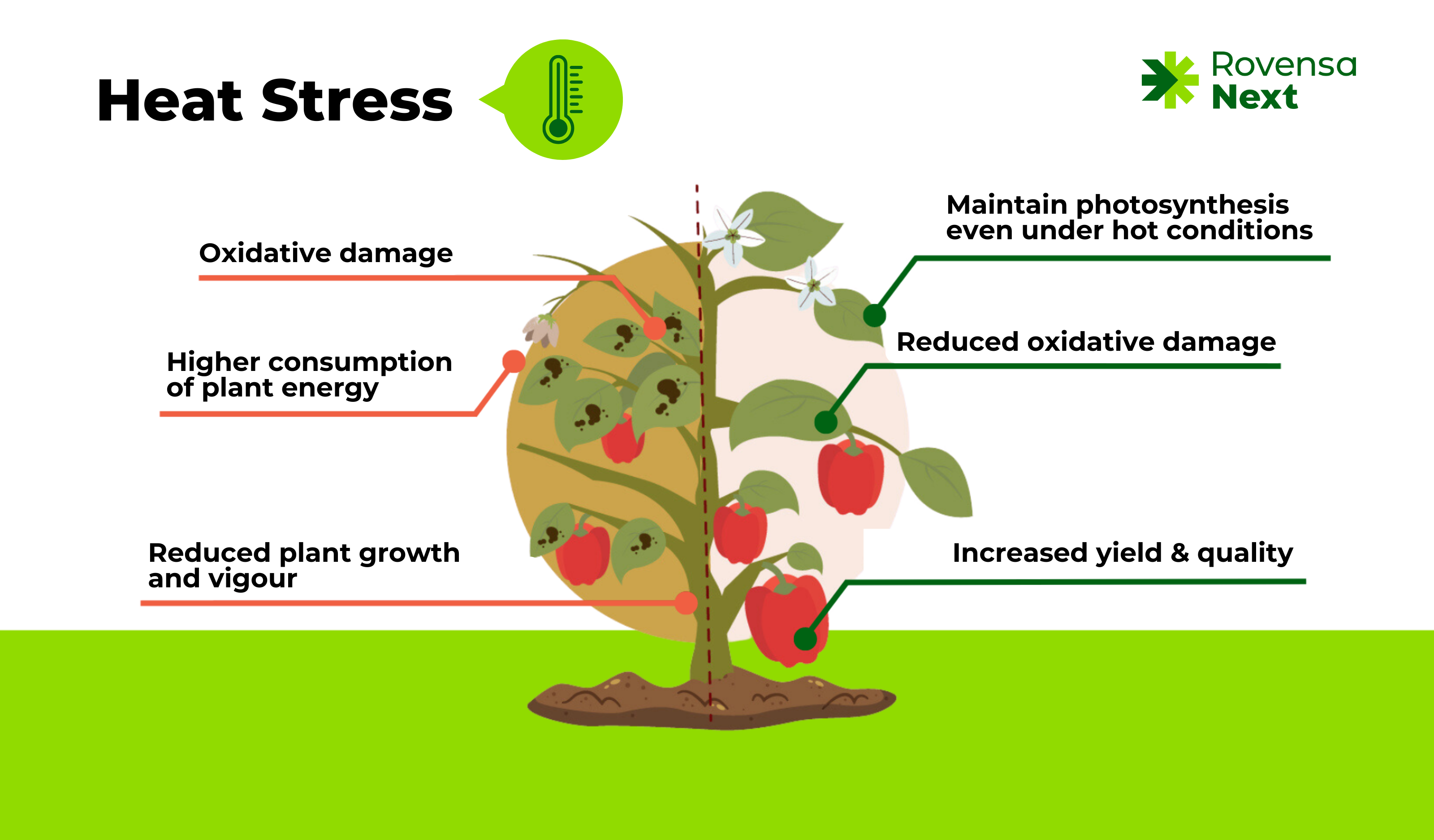
How does heat stress affect plant structure and function?
At the plant level, heat stress leads to smaller cells, closed stomata, reduced water loss, wilting leaves, wider xylem vessels, and shallow, wide root growth with increased lateral branching. Sub-cellularly, it disrupts chloroplast and mitochondrial structures, reducing photosynthesis and respiration.
At the whole plant level, there is a general tendency of reduced cell size, closure of stomata, reduced water loss from transpiration, increased stomatal densities, wilted leaves, and greater xylem vessels of both root and shoot. Heat also inhibits root growth, making root distribution shallower and wider, and increases lateral branching of roots.
At the sub-cellular level, heat stress induces significant changes in chloroplasts, disrupting photosynthesis by altering their structure. High temperatures cause loss of grana stacking or swelling of photosynthetic membranes. Chloroplasts in mesophyll cells become round, stroma lamellae swell, vacuole contents clump, cristae are disrupted, and mitochondria lose their contents, leading to decreased photosynthetic and respiratory activities.
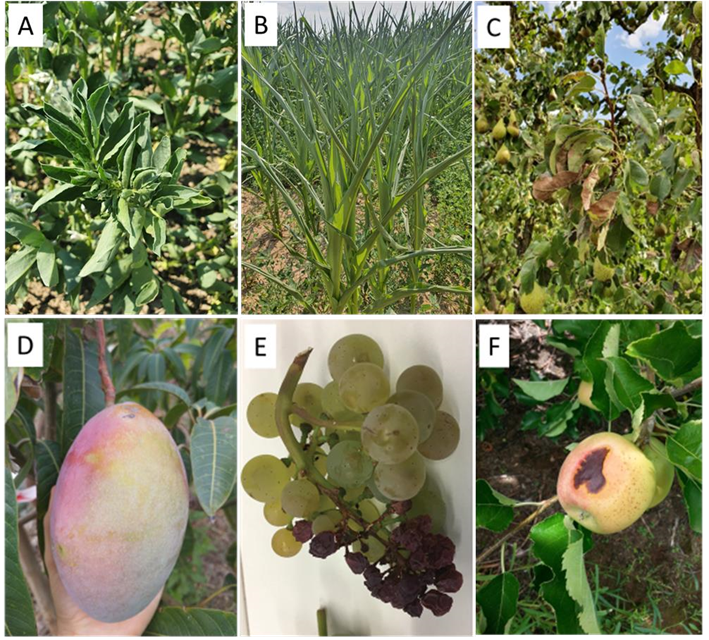
Physiological Changes and Responses
Under high temperature stress, plants face reduced water availability and higher daytime water loss compared to nighttime. To adapt, they accumulate compatible osmolytes like sugars, sugar alcohols (polyols), proline, and other compounds that stabilize cellular structures, enhancing stress tolerance.
Heat stress also disrupts photosynthesis, potentially limiting plant growth, with changes in chlorophyll fluorescence and ratios indicating thermotolerance.
Hormonal shifts, including increased abscisic acid (ABA) and ethylene levels, regulate plant responses to heat stress, affecting processes from germination to stress tolerance. Additionally, heat stress induces production of secondary metabolites like phenolics and carotenoids, which protect cells and mitigate oxidative damage, aiding plants in acclimating to thermal challenges.
Under heat stress, differences in flower development and pollen viability between tolerant and sensitive tomato genotypes are evident (Figure 3). Tolerant genotypes typically exhibit robust inflorescences and well-formed anther cones (panels A and C), whereas sensitive genotypes show signs of reduced vigour and malformed anther cones (panels B and D). These morphological distinctions highlight the varying impacts of high temperatures on reproductive processes in different tomato varieties.
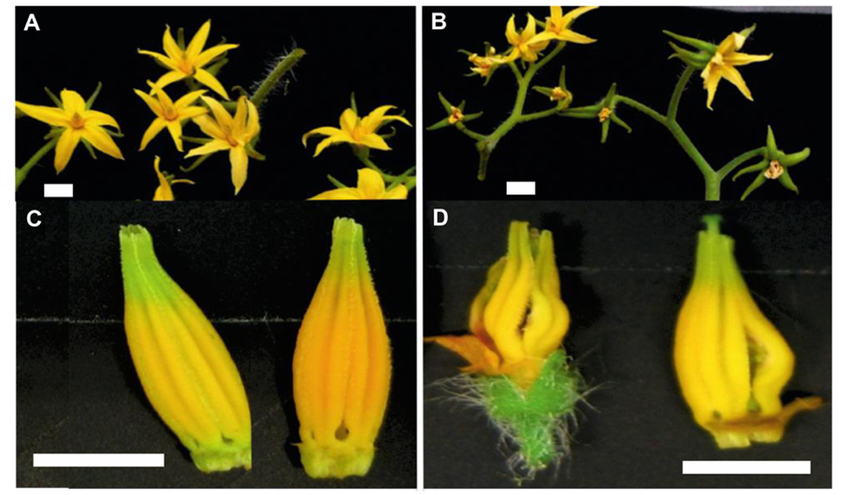
Molecular changes and responses
Heat stress in plants induces oxidative stress through reactive oxygen species (ROS) like singlet oxygen, superoxide radical, hydrogen peroxide, and hydroxyl radical. These ROS damage cellular membranes, chlorophyll, proteins, DNA, and lipids, impairing plant metabolism and reducing growth and yield. Plants combat oxidative stress with enzymatic systems such as superoxide dismutase, ascorbate peroxidase, catalase, and glutathione peroxidase, along with non-enzymatic antioxidants like vitamins C and E, plant polyphenols, and carotenoids.
Accumulation of substances like proline and glutathione enhances cellular protection against oxidative damage during heat exposure. Heat shock proteins (HSPs), including HSP90, HSP70, and low molecular weight proteins, act as molecular chaperones to prevent protein denaturation and maintain cellular function under heat stress. Other stress proteins such as ubiquitin, Pir proteins, LEA, and dehydrins also protect cellular structures from oxidative and dehydration stress caused by high temperatures.

Rovensa Next’s proven strategy through heat stress trials
The application of biostimulants is an effective way to minimize the effects of this abiotic stress on crops affected by high temperature conditions. The most important results of the heat stress trials that the Rovensa Next Global R&D Bionutrition department and University of Milan have developed together since 2019 until the beginning of 2022 have been summarized.
The objective of these trials was to understand the mode of action of Rovensa Next’s key biostimulant lines under heat stress conditions, to develop clear and specific recommendations on which products to use, for what type of abiotic stresses, and when to apply them. As such, it can be concluded that this type of situations can be solved with two strategies:
- Primactive effect:
Primactive effect enhances plant vigour and stress resilience through proprietary technology without depleting energy reserves. Phylgreen, a natural Ascophyllum nodosum extract, exemplifies Primactive’s benefits, retaining vital metabolites and antioxidants from the exclusive Gentle Extraction process.
-
- The application of Phylgreen showed good performance as a preventive treatment (before) for heat stress. Timing: 2-3 days before the heat stress shock.
- Curactive effect:
The Curactive effect is used to describe the combined mode of action of Rovensa Next biostimulant products that directly help crops during an abiotic stress event, or with the recovery after through diverse actions: maintaining cellular water balance, triggering stress-responsive gene expression, and detoxifying harmful chemicals produced under stress.
-
- Delfan Plus and Vegenergy are abiotic stress reliever solutions with curactive effect that contains amino acids that are used by plants to block the stress situation and resume metabolism and growth. It relieves abiotic stress by reactivating crop carbohydrate and nitrogen metabolism, helping plants to better recover after the stress happened. Timing: Applied after the heat stress event for best results.
Partnering with Rovensa Next to combat heat stress
Heat stress poses a formidable challenge to modern agriculture, but innovative biosolutions from Rovensa Next provide effective mitigation strategies. By integrating products like Phylgreen, Delfan Plus and Vegenergy, among others, into crop management practices, farmers can enhance plant resilience, optimize yield, and ensure sustainable productivity in the face of rising global temperatures.
For more information on how to protect your crops from heat stress, get in contact with our local representative to learn more about our holistic portfolio of biosolutions.

